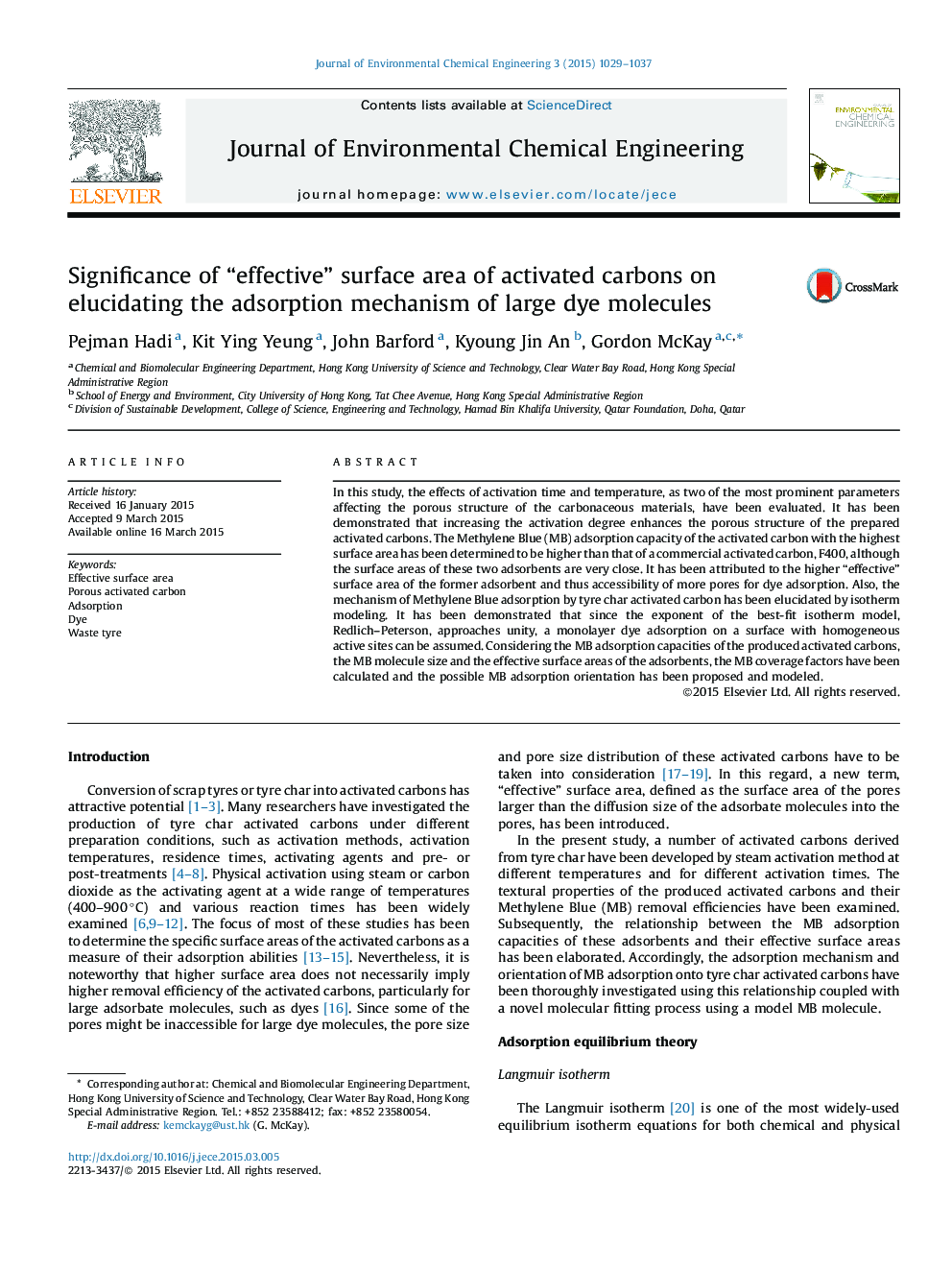| Article ID | Journal | Published Year | Pages | File Type |
|---|---|---|---|---|
| 222329 | Journal of Environmental Chemical Engineering | 2015 | 9 Pages |
In this study, the effects of activation time and temperature, as two of the most prominent parameters affecting the porous structure of the carbonaceous materials, have been evaluated. It has been demonstrated that increasing the activation degree enhances the porous structure of the prepared activated carbons. The Methylene Blue (MB) adsorption capacity of the activated carbon with the highest surface area has been determined to be higher than that of a commercial activated carbon, F400, although the surface areas of these two adsorbents are very close. It has been attributed to the higher “effective” surface area of the former adsorbent and thus accessibility of more pores for dye adsorption. Also, the mechanism of Methylene Blue adsorption by tyre char activated carbon has been elucidated by isotherm modeling. It has been demonstrated that since the exponent of the best-fit isotherm model, Redlich–Peterson, approaches unity, a monolayer dye adsorption on a surface with homogeneous active sites can be assumed. Considering the MB adsorption capacities of the produced activated carbons, the MB molecule size and the effective surface areas of the adsorbents, the MB coverage factors have been calculated and the possible MB adsorption orientation has been proposed and modeled.
